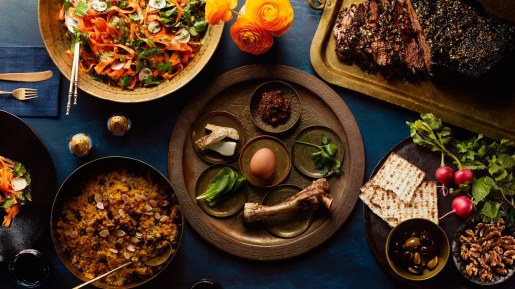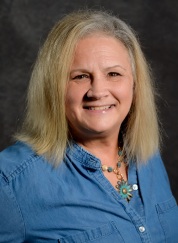
He was oppressed and afflicted, yet He did not open His mouth; He was led like a lamb to the slaughter. Isaiah 53:7a
I left off Part 2 of this series with a question. The answer is right here on this page…
In preparation for Passover, the men of the family would pick a one-year old spotless male lamb, bring him into their homes for fourteen days before they were to be slaughtered at twilight on the fourteenth day. Everyone in the household would care for this precious little lamb inside their homes.
You must have it in safe keeping until the fourteenth day of the month. Exodus 12:6
Comparison Christ and the Lamb:
- Each one to take a lamb, the importance of an individual act.
- Unblemished or spotless ― the sinless, perfect life of Christ.
- Male ― Christ, the Son of God.
- The lamb dwelling among them ― in their family, in their homes ― just as Jesus dwells with us.
- It was loved before it was sacrificed, just as Jesus was loved by some before He was sacrificed. “Behold, the Lamb of God who takes away the sin of the world!” John 1:29
I promise you from now on you will never see “Communion” the same. The reason I say this is, when we receive Communion in church, it is a shorter version of The Lord’s Supper/Passover. My hope for you is to fully understand what Jesus our Messiah has done for you and me. For us to grasp, how wide and long and high and deep is the love of Christ. Ephesians 3:18
Some things to remember …
All of the elements are the same.
The format is the same.
The scripture is the same ― and I will be explaining it from a Jewish Christian/Messianic point of view.

Passover Symbols and their Meanings
There are Four Cups of Wine during Seder based on Exodus 6: 6-7 “I Am the Lord, and I will bring you out from under the yoke of the Egyptians. I will free you from being slaves to them, and I will Redeem you with an Outstretched arm and with mighty acts of judgment. I will take you as my own people.”
- The Cup of Sanctification – “I will bring you”
- The Cup of Plagues or Instruction – “I will free you”
- The Cup of Redemption – “I will redeem you”
- The Cup of Praise or Acceptance – “I will take you”
HAGGADAH: means narration or recital. This is the book used in the Seder.
Lighting the Celebration Candles: Traditionally the mother lights the candles.
First candle: A blessing is said, “WE Praise You, O Lord our God, King of the Universe, who brings forth light out of darkness.”
Second candle: “Jesus said, I am the light of the world.” (second candle is only in Christian Seder)
Kiddush: Holding the first cup of wine in his right hand, the leader begins the Seder by reciting the Kiddush (Kiddush means consecration)
The Invitation: The Haggadah begins with words of hope and promise. Redemption.
The Questions: There are five questions, usually the children ask. “Why do we do this????”
Washing Hands
Karpas: Parsley dipped in salt water. The meaning of this is to show how God brought them safely across the Red Sea and made them a new nation. (the green vegetable symbolizes newness)
Matzo: THREE loaves of Unleavened bread represent the Trinity; Father, Son, Holy Spirit. They are placed in a 3 pocket linen cover. (Note: Yes, 3 loaves have been used since Passover began – long before Jesus was born!) The middle Matzo is the Perfect picture of Christ in the Passover. The father breaks the middle loaf into two parts. He put half back between the two loaves and carefully wraps the other half and places it under a pillow – symbolic of the death of Jesus. Wrapped in linen napkin and placed under the pillow, His burial in a borrowed tomb is recreated. The resurrection is symbolized at the close of the Seder when the hidden loaf is brought back to the table.
Unleavened bread is made without yeast. Yeast is a vivid picture of what sin does to a life.
Matzo looks more like a cracker with…
- Its has brown spots, looks like it has been bruised .
- Pierced and stripes.
The Passover Lamb: Used to drain the blood and put the blood on the door frames and to eat during the meal. The lamb could not have any bones broken.
Prophecy of Isaiah 53:7 He the Messiah is brought as a Lamb that is led to slaughter.
Prophecy and History meet. “For Christ our Passover also has been Sacrificed.” 1 Corinthians 5:7
The Shank Bone: A symbol of the Lamb.
Charoseth: Apple mixture resembles the clay or mortar the Israelites made in Egypt.
Maror: Bitter herbs are symbolic of the slavery. To Christians, it’s a reminder of the bitter cup the Lord tasted on our behalf.
Shulhan Orekh and the Egg: The meal is eaten, starting with a hard-boiled egg in salt water.
The Egg represents the hardness of Pharaoh’s heart. And the salt water, the tears of the Hebrew slaves.
Afikoman…. Stopping here and saving one of the best parts for next week. I hope you will join me as I finish the end of the Seder.
Heavenly Father, Thank You for sending Your Son to rescue us from sin and death. With outstretched arms, You have Redeemed us. — Amen
Deb Cool
References:
Celebrating Biblical Feasts by Martha Zimmerman
Deb is passionate about Jesus and women’s ministry. She currently leads a women’s small group through her church, LCBC Waynesboro.
Deb has been married for 42 years to the love of her life, Rodney. They have awesome sons whom have beautiful wives. And they are blessed with eight amazing grandchildren.

